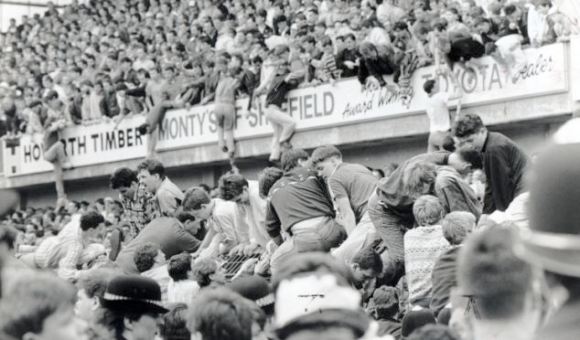 In 1989, 96 people were killed and over 700 injured when a serious of catastrophic events plagued Sheffield Wednesday’s stadium in the F.A Cup semi-final between Liverpool and Nottingham Forest. This story has come to life recently, with the emergence of new information being published indicating that the police were responsible for contributing to England’s biggest stadium tragedy that had previously been covered up.
In 1989, 96 people were killed and over 700 injured when a serious of catastrophic events plagued Sheffield Wednesday’s stadium in the F.A Cup semi-final between Liverpool and Nottingham Forest. This story has come to life recently, with the emergence of new information being published indicating that the police were responsible for contributing to England’s biggest stadium tragedy that had previously been covered up.
So, how did this happen?
BBC News (2012) identifies the steps which transpired that frightful day resulting in the death of over 90 people. Firstly, the condition of the turnstiles in Leppings lane where thousands of Liverpool fans were slowly piling through was old and decrepit. Accompanied with the fact that the combined capacity of pens 3 and 4 was regarded as 2200, however with the crush barriers not meeting regulations the capacity should have been reduced to 1600, this was not done. Outside the turnstiles the build-up of fans was getting increasingly dangerous. The police acted accordingly by opening an exit gate which moved the restless crowd into a tunnel which feed out into the bursting pens. This made the actual capacity over double of what it should have been resulting in the fans climbing over fences to escape mayhem. However when one of these fences clasped it brought about the inflicting damage we all know about today.
What could have been done?
There have been many investigations into the events at Hillsborough and how they could have been prevented. Lord Taylor of Gosforth produced the Hillsborough Stadium Disaster Inquiry report within this he recognises that it was clearly the fault of the police not being able to control the situation via lack of communication. Walsh (1989) also criticises the police by indicating that speed and flexibility is crucial to responding to any disaster and they did neither! However he does highlight that there was a serve lack of planning which he suggests was caused by the complacency of the success of previous games. Walsh (2007) expands on this suggesting that every event should be continuously worked upon and revised to the individual needs. The report also acknowledges that the F.A. did not properly highlight potential risks of the venue; Richardson (1993) proposes that Hillsborough should not have even been considered to host this match and it was a poor decision from the F.A.
Did the travesty impact events in the future?
The findings from the Taylor report resulted in a nationwide change to football stadiums. It required all stadiums to become all-seaters, Taylor believed that this would prevent any situations like Hillsborough happening again. It enabled capacities to be contained via fans being allocated an individual seat so overcrowding does not become an issue anymore. However a lot of fans have condemned the report stating that it has resulted in a serve lack of atmosphere at games. Taylor would rebuttal this comment though, suggesting that would the slight improvement in atmosphere be worth the potential of loss of life???
BBC News (2012) Hillsborough disaster and its aftermath. [online] Available at: http://www.bbc.co.uk/news/uk-19545126 [Accessed: 14 Dec 2012].
Richardson, W. (1993). Identifying the cultural causes of disasters: An analysis of the Hillsborough Football stadium disaster. Journal of Contingencies and Crisis Management, 1(1), 27-35.
Walsh, M. (1989). Taylor on Hillsborough: what can we learn?. Disasters, 13(3), 274-277.
Walsh, M. (2007). Disasters, Current Planning and Recent Experience. London, Edward Arnold.